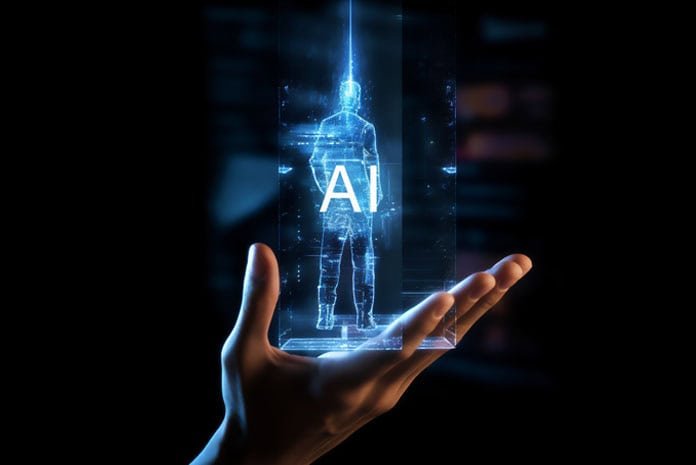Schneider Electric has accelerated its AI-ready end-to-end data center solutions with new announcements that address pressing energy and sustainability challenges driven by high demand for AI systems.
The first part of the announcement is a new data center reference design, co-developed with NVIDIA, that will support high-density liquid-cooled AI clusters of up to 132 kW per rack. Optimized for NVIDIA’s GB200 NVL72 and Blackwell chips, the design streamlines planning and deployment with proven and validated architectures, addressing the unique challenges of using liquid cooling at scale.
Additionally, Schneider Electric today introduced its new Galaxy VXL Uninterruptible Power Supply (UPS), the industry’s most compact high-density UPS, designed for AI, data centers and large-scale electrical workloads. The Galaxy VXL inverter offers 52% space savings compared to the industry average, and with a power density of up to 1042 kW/m², this 1.25 MW scalable modular inverter is designed to deliver more efficient power in a smaller, high-density footprint.
Both innovations are part of Schneider Electric’s AI-ready end-to-end data center solutions, which focus on three key areas, including developing an energy strategy for the AI era; deploy advanced infrastructure; and sustainable development consulting. They seek to benefit data center owners and operators by deploying high-density, energy-efficient infrastructure to support AI workloads in the most sustainable way possible.
“The energy and environmental impact of AI is increasing at an unprecedented rate, and it is critical to lower the energy curve by finding new ways to decarbonize data centers and digital infrastructure,” said Pankaj Sharma, executive vice president of data centers and networks at Schneider Electric. “At Schneider Electric, we are committed to pushing boundaries, setting new standards and shaping the future of AI, all while protecting the environment. This requires a strategic approach, from network to chip to cooler and beyond.
Partnership with NVIDIA
Schneider Electric’s new data center reference design was co-developed with NVIDIA to support liquid-cooled AI clusters while addressing the unique challenges of deploying liquid cooling in high-speed data center environments. large scale, colocation and enterprise.
Leveraging the partnership between the companies, the reference design includes options for liquid-to-liquid coolant distribution units (CDUs) and direct-on-chip liquid cooling, and shares complete mechanical and electrical plans to ensure more energy-efficient and sustainable operations for the AI data centers of the future.
Developed using Schneider Electric software tools including Ecodial and EcoStruxureIT Design CFD, the design can be customized to meet the specific requirements of the AI workload, while helping users take advantage of AI designs. most sustainable and energy-efficient infrastructure for high-density applications.
“Building the future of accelerated computing and AI requires speed and a solid foundation,” said Jensen Huang, founder and CEO of NVIDIA. “Our collaboration with Schneider Electric enables our customers to engineer global technological advances onto a stable and resilient infrastructure. Together, we are creating AI data centers purpose-built for accelerated computing, supporting complex architectures essential to delivering digital intelligence to every business and industry.
End-to-end AI data center solutions
Announcements made during the virtual event reinforce Schneider Electric’s commitments to creating comprehensive, sustainable, end-to-end AI-ready data center solutions, helping customers decarbonize their digital infrastructure everywhere and across the globe. world. They focus on three key areas, including:
Energy strategy in the AI era: Schneider Electric helps businesses secure renewable energy and optimize on-site power generation from various sources such as wind, solar and hydrogen. It provides services such as site selection and geographic analysis based on customer deployment plans and enables on-site power generation through AlphaStruxure, ensuring speed to market, reliability, resilience and sustainability of chosen energy sources.
Advanced infrastructure solutions: Schneider Electric has developed a comprehensive range of high-density, energy-efficient infrastructure systems for a multitude of AI requirements exceeding 100 kW per rack. This includes network-to-chip and chip-to-cooler data center infrastructure components, AI-powered remote monitoring and energy management software, and digital services for life cycle optimization.
Schneider Electric’s newly announced Galaxy VXL UPS is the latest addition to the company’s end-to-end advanced infrastructure portfolio. For the first time, this new UPS offers customers a scalable, modular 1.25 MW solution with 125 kW/3U power modules in a 1.2 m2 footprint, while being capable of supporting up to ‘at 1.25 MW of critical load in a single chassis and up to 5 MW with 4 units in parallel in a space of only 4.8 M2.
Additionally, to address rising temperatures of high-density workloads, Schneider Electric recently signed an agreement to acquire a majority stake in Motivair Corporation, enhancing its liquid cooling portfolio and strengthening its expertise in direct on-chip, high-capacity liquid cooling. thermal solutions.
Efficiency and sustainability: Schneider Electric’s sustainability consulting business helps clients exceed their decarbonization goals through tailored sustainability strategies, emissions assessments and supplier engagement programs. These global advisory services provide clients with data-driven insights through EcoStruxure Resource Advisor and are supported by 2,400 experts in more than 100 countries.
Bending the AI energy curve
Schneider Electric also advocates for a scientific approach to “bend the curve” of energy consumption. The use of “energy intelligence for sustainable AI” is at the heart of this approach. Schneider Electric believes this can be achieved by integrating data center infrastructure with AI-based applications.
In this way, industries can not only mitigate AI’s energy footprint, but also use AI’s capabilities and monitoring insights as tools for broader decarbonization efforts. Achieving this vision requires a shared commitment to deploy sustainable solutions and harness the potential of AI to increase efficiency across all sectors.
“By 2027, data center power consumption is expected to account for 2.5% of global demand, with the remaining 97.5% spread across sectors such as buildings, manufacturing, transportation and energy” , said Sean Graham, Research Director, Cloud to Edge Data Center Trends, IDC. “As data centers pursue their own net-zero targets amid unprecedented growth, the real promise of sustainability lies in harnessing AI to decarbonize entire value chains across all sectors. As Schneider Electric and NVIDIA have demonstrated, long-term collaboration and innovation are essential to ensuring efficiency and sustainability.

